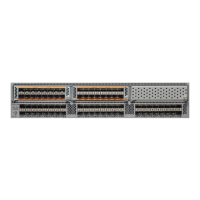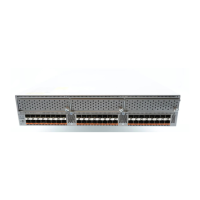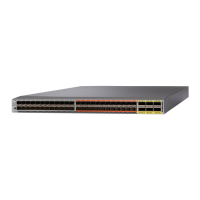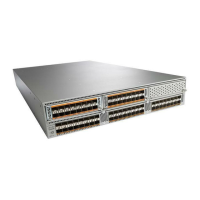Send feedback to nx5000-docfeedback@cisco.com
1-6
Cisco Nexus 5000 Series Switch CLI Software Configuration Guide
OL-16597-01
Chapter 1 Configuring STP Extensions
Configuring STP Extensions
Configuring Spanning Tree Port Types Globally
The spanning tree port type designation depends on the type of device the port is connected to, as
follows:
• Edge—Edge ports are connected to hosts and can be either an access port or a trunk port.
• Network—Network ports are connected only to switches or bridges.
• Normal—Normal ports are neither edge ports nor network ports; they are normal spanning tree
ports. These ports can be connected to any type of device.
You can configure the port type either globally or per interface. By default, the spanning tree port type
is normal.
Before you configure the spanning port type, you should do the following:
• Ensure that STP is configured.
• Ensure that you are configuring the ports correctly for the type of device to which the interface is
connected.
To configure the spanning tree port types globally, perform this task:
This example shows how to configure all access and trunk ports connected to hosts as spanning tree edge
ports:
switch# configure terminal
switch(config)# spanning-tree port type edge default
This example shows how to configure all ports connected to switches or bridges as spanning tree network
ports:
switch# configure terminal
switch(config)# spanning-tree port type network default
Command Purpose
Step 1
switch# configure terminal
Enters configuration mode.
Step 2
switch(config)# spanning-tree port type
edge default
Configures all interfaces as edge ports. This assumes
all ports are connected to hosts/servers. Edge ports
immediately transition to the forwarding state without
passing through the blocking or learning state at
linkup. By default, spanning tree ports are normal port
types.
switch(config)# spanning-tree port type
network default
Configures all interfaces as spanning tree network
ports. This assumes all ports are connected to switches
and bridges. If you enable Bridge Assurance, it
automatically runs on network ports. By default,
spanning tree ports are normal port types.
Note If you configure interfaces connected to hosts
as network ports, those ports automatically
move into the blocking state.

